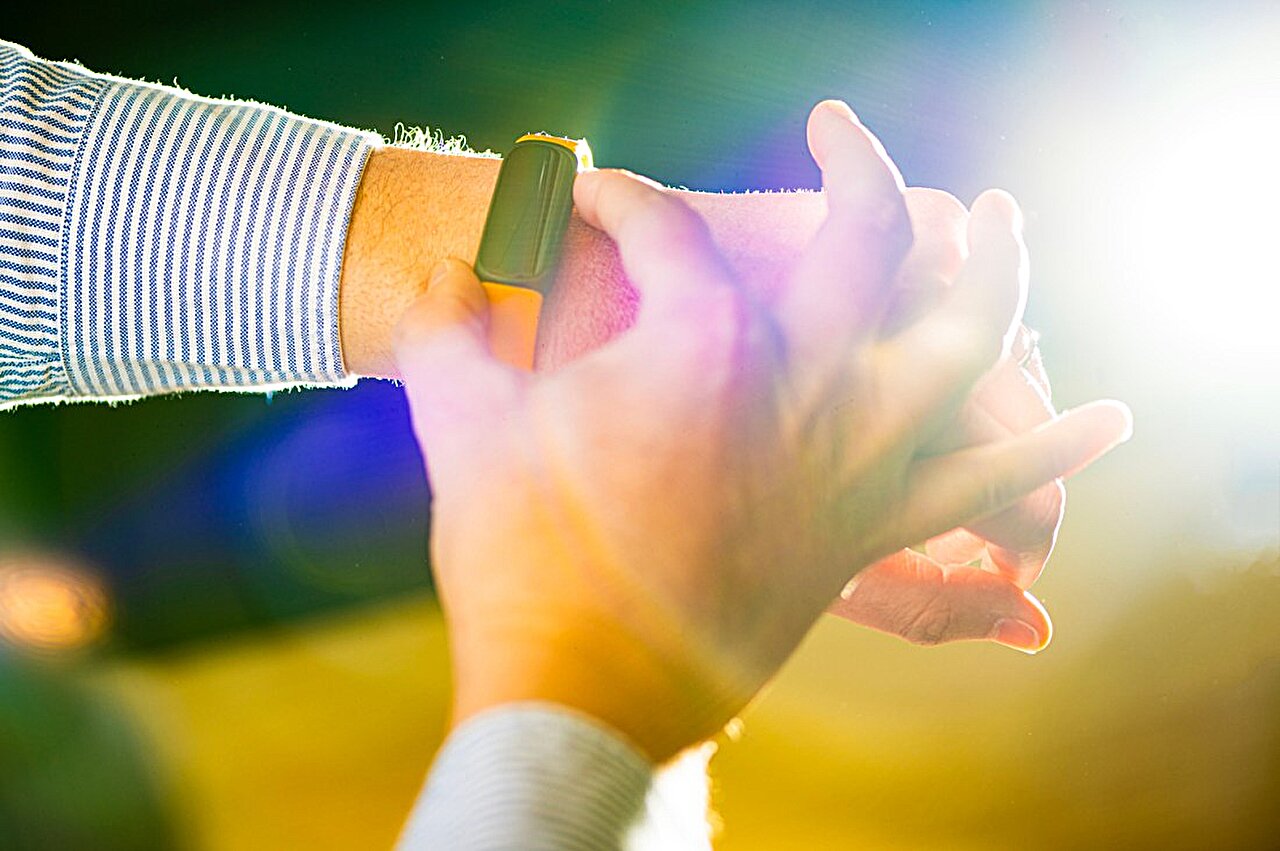× close
The same smartwatch that counts your steps and hours of sleep can also offer mental health clinicians valuable information about depression symptoms, a Northeastern expert says in an article published in the New England Journal of Medicine.
Wearable technology is part of a focus on precision medicine that will allow clinicians to better tailor treatment for individual patients, says Joshua Curtiss, a Northeastern assistant professor of applied psychology and one of the article’s co-authors.
“The purpose of this type of research was to figure out if we can use passive sensor data to predict the things we care about—to see if it is associated with changes in depression severity or symptom severity,” Curtiss says.
“It showed the very individualized ways depression manifests in people,” he says.
Objective tracking of symptoms
The data in the article came from anonymized patients at Massachusetts General Hospital who wore the Empatica E3 wristband to track sleep, acceleration and movement, heart rate variability and other physiological indicators, says Curtiss, whose five co-authors are researchers at the MIT Media Lab and MGH.
Alterations in the pattern of sleep—too much or too little—can be symptoms of depression, as can lack of physical activity and social isolation.
All of these symptoms can be tracked by wearable technology in the form of digital watches and smartphones, Curtiss says.
In the case of socialization with others, for instance, clinicians can view data to see how often text messaging apps have been used, he says.
“I think passive sensor data can offer an incredible tool for getting more information that otherwise is really difficult to get,” Curtiss says.
“This is not to supersede clinical judgment,” Curtiss says. “We combine (sensor) information with our clinical judgment and what the patients are telling us to get a full picture.”
If the data shows the patient hasn’t had much physical activity, which could indicate fatigue or anhedonia—lack of enjoyment in life—the clinician could bring it to the patient’s attention and discuss what’s going on, he says.
The same goes for sleep patterns, Curtiss says.
Why not just rely on what the patient reports?
While patient accounts are critically important, it’s normal for patients to underreport or overreport symptoms, either because they forgot something, have grown accustomed to being in distress or have tired of filling out mental health questionnaires, Curtiss says.
The NEJM article gives the example of a real-life patient who researchers named Joe. Joe tells his clinician he’s feeling much more active and social, “and I’m sleeping great!”
When the clinician gently points out that the data from Joe’s wearable indicates his sleep has been very irregular the past two weeks, Joe admits he only slept well the day before.
The conversation led to the clinician asking whether they could talk more about improving Joe’s sleep.
“Historically, clinical psychology and psychiatry have used a similar family of treatments for anyone with depression, no matter what individual differences they have,” Curtiss says.
“The idea behind this sort of data is if it’s more personalized, individualized, we can think about differences in the type of treatment skills or psychotherapy skills we might deliver to a patient.”
Passive sensor data greatly reduces the burden of patient self-reporting symptoms via multiple questionnaires, Curtiss says, adding that it can also help clinicians get up to speed more quickly on a new patient’s mental health status.
More information:
Szymon Fedor et al, Wearable Technology in Clinical Practice for Depressive Disorder, New England Journal of Medicine (2023). DOI: 10.1056/NEJMra2215898

Jessica Irvine is a tech enthusiast specializing in gadgets. From smart home devices to cutting-edge electronics, Jessica explores the world of consumer tech, offering readers comprehensive reviews, hands-on experiences, and expert insights into the coolest and most innovative gadgets on the market.


